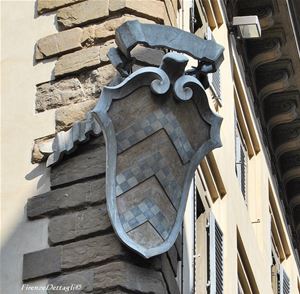Superbowl
Sunday is nearly upon us, a day in which nearly 100 million people worldwide
will watch the season climax of one of the most popular games in the world.
Despite its current popularity, American football has very humble beginnings.
Combining elements of rugby and soccer, it is based on the informal ‘mob
football’ of England and began to emerge in American schools during the
mid-nineteenth century. In a similar way, a new sport invented in Florence,
called madball, is beginning to appear on the international scene. Who knows to
what heights it may climb? Rose Mackworth-Young reports.
A sports
revolution in many schools throughout Italy and even elsewhere in Europe,
madball was invented in Florence in 1997. Combining elements of volleyball,
basketball, rugby and American football, madball has proved hugely popular in
every school that has taken it up, and was even played in piazza Signoria last
year.
Innovative,
dynamic and simple to learn, madball is intended to foster fairness, honesty
and respect towards others, channelling the instinct to fight in a controlled
and positive way, and encouraging healthy competitiveness and love of sport.
Madball’s
inventor, who goes by the pseudonym Giusman, first began to develop the sport
when he taught judo, introducing an oval ball to help his students overcome
their fear of physical contact. From Florence, the game spread to Italian
schools in Trento, Milan, Parma, Bressanone, Rome and Naples, as well as to
several schools in France, Sweden, Hungary, Peru and Switzerland.
Madball
can be played by mixed or single-sex teams of four to six players, on either an
indoor or outdoor court with a basketball net at either end and a volleyball
net in the middle. Play starts with the teams on their respective sides, and,
as in basketball, the aim is to score a goal (known as a ‘mango,’ a reference
to the shape of the ball) in the opponents’ net.
The
soft ball is similar to an oval rugby ball and players in possession can run
with it or throw it to teammates in any direction. Players can pass under the
net to move to the opponents’ side, but cannot do so when they are in
possession of the ball. Rugby-scrum-like actions involving four players are
allowed to pry the ball from the hands of an opponent, but the player in
possession of the ball must not be brought to the ground and the scrum cannot
last longer than eight seconds. To encourage participants to keep the ball in
play as much as possible, the rules state that the ball is ‘out’ only if it
does not return to the court; it is not considered ‘out’ if it bounces off a
wall, tree or the ceiling.
Like
any young sport, madball is constantly evolving and the rules are subject to
change in order to make it more fluid and enjoyable-and, above all, safer.
Suggestions for improvement are welcome and, indeed, often taken.
Giusman
believes the sport is popular because it is easy to learn and play, has minimal
rules, and, encompassing many different sport disciplines, is suited for a wide
range of skills, among them physical strength, speed, agility and tactical
thinking. Further, like Ultimate Frisbee, girls can compete with boys on equal
footing.
‘I
believe that the controlled liberation of instinctive feelings, including
competitiveness and solidarity, may represent an additional lifeline to cling
to in order to overcome the problems, both small and large, that we experience
daily in the new millennium. Young people need a lot of “anchors” if they are
to enter successfully into the future,’ Giusman explains. ‘In Italy we have
been witnessing for some time the growth of disciplines that a few years ago
were completely unknown to us, such as squash, taekwondo and badminton, so the
atmosphere is ripe for a new sport,‘ he adds.
Madball
is one of several new sports that have been invented in recent years, combining
existing games and rules. Examples include Korfball (from Holland, combining
netball and basketball), Jorkyball (from France, a mix of squash and football)
and Footvolley (from Brazil, combining volleyball and football). Footvolley, in
particular, has become very popular, and its international tournaments set a
precedent for madball and others.
Madball
is a sport to keep an eye on. Who knows: in a few years we may be settling down
in front of our TVs to watch the Madbowl! In the meantime, visit www.madballsport.eu or call 055/600009
for the latest news or to learn more about this mad, mad, mad sport.







